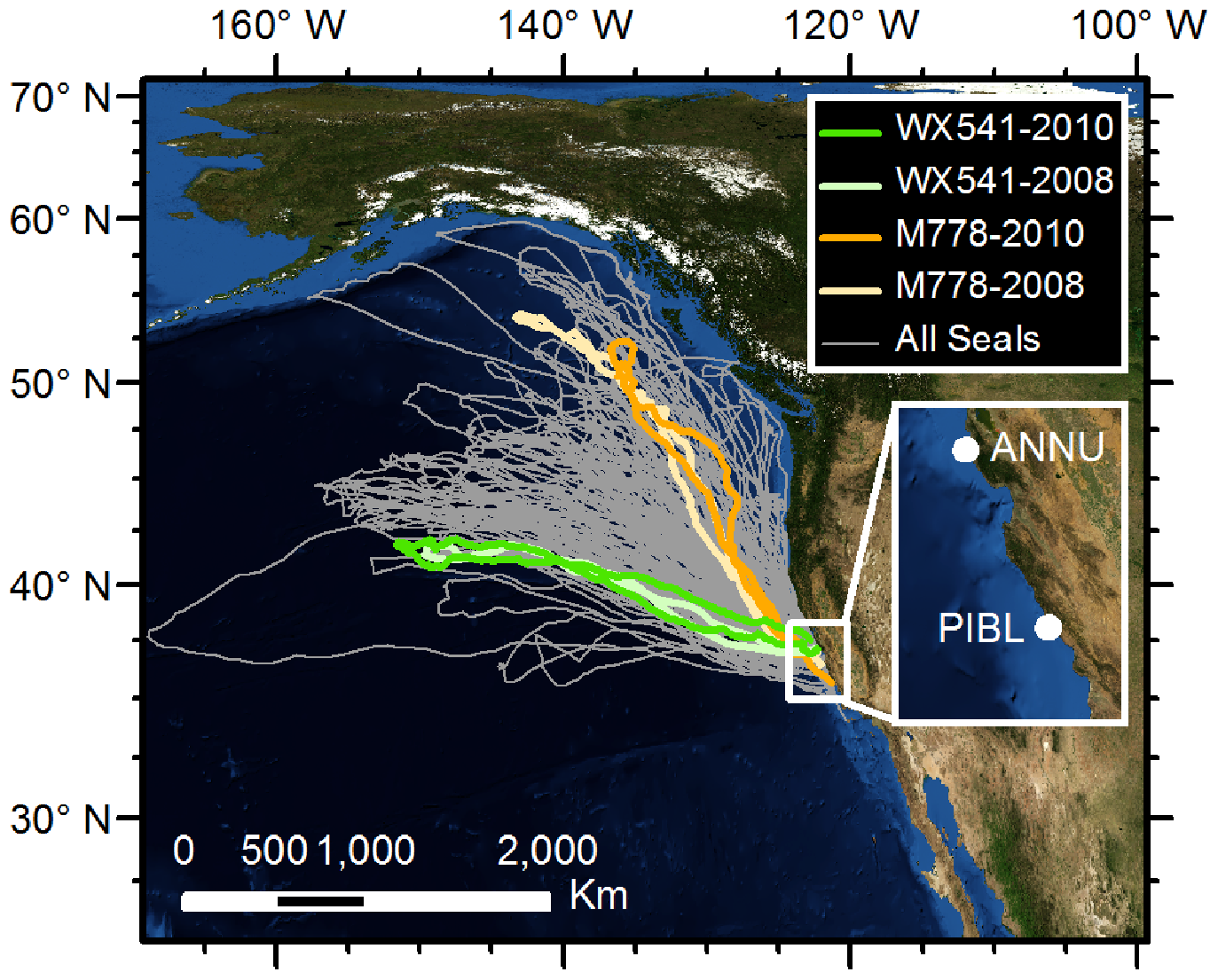H1N1 originated in pigs. It emerged in humans in 2009, spreading worldwide as a pandemic. The World Health Organization now considers the H1N1 strain from 2009 to be under control, taking on the behavior of a seasonal virus.
Between 2009 and 2011, the team of scientists tested nasal swabs from more than 900 marine mammals from 10 different species off the Pacific Coast from Alaska to California. They detected H1N1 infection in two northern elephant seals and antibodies to the virus in an additional 28 elephant seals, indicating more widespread exposure.
Neither infected seal appeared to be ill, indicating marine mammals may be infected without showing clinical signs of illness.
The findings are particularly pertinent to people who handle marine mammals, such as veterinarians and animal rescue and rehabilitation workers, Goldstein said. They are also a reminder of the importance of wearing personal protective gear when working around marine mammals, both to prevent workers’ exposure to diseases, as well as to prevent the transmission of human diseases to animals.
“This shows influenza viruses can move among species," says said lead author Tracey Goldstein, an associate professor with the UC Davis One Health Institute and Wildlife Health Center.
When elephant seals are at sea, they spend most of their time foraging in the northeast Pacific Ocean off the continental shelf, which makes direct contact with humans unlikely, the report said.
The seals had been satellite tagged and tracked, so the researchers knew exactly where they had been and when they arrived on the coast. The first seal traveled from California on Feb. 11 to southeast Alaska to forage off the continental shelf, returning to Point Piedras Blancas near San Simeon, Calif., on April 24. The second seal left Ano Nuevo State Reserve in San Mateo County, Calif., on Feb. 8, traveling to the northeast Pacific and returning on May 5. Infections in both seals were detected within days of their return to land. The report said exposure likely occurred in the seals before they reached land, either while at sea or upon entering the near-shore environment.

Tracking data from two adult female Northern elephant seals (Mirounga angustrostris) that tested positive for A(H1N1)pdm09 infection (WX541 in green, M778 in orange), showing both their tracks in 2008 and 2010 leaving from the Año Nuevo, CA, USA colony and returning to either Año Nuevo or Piedras Blancas colonies. Tracks from other adult female Northern elephant seals movement tagged between 2004 and 2010 shown in grey for comparison. Light blue areas represent the waters on the continental shelf and the dark blue represents deep pelagic waters.
Credit: doi:10.1371/journal.pone.0062259
“H1N1 was circulating in humans in 2009,” said Goldstein. “The seals on land in early 2010 tested negative before they went to sea, but when they returned from sea in spring 2010, they tested positive. So the question is where did it come from?”
Citation: Goldstein T, Mena I, Anthony SJ, Medina R, Robinson PW, et al. (2013) Pandemic H1N1 Influenza Isolated from Free-Ranging Northern Elephant Seals in 2010 off the Central California Coast. PLoS ONE 8(5): e62259. doi:10.1371/journal.pone.0062259





Comments